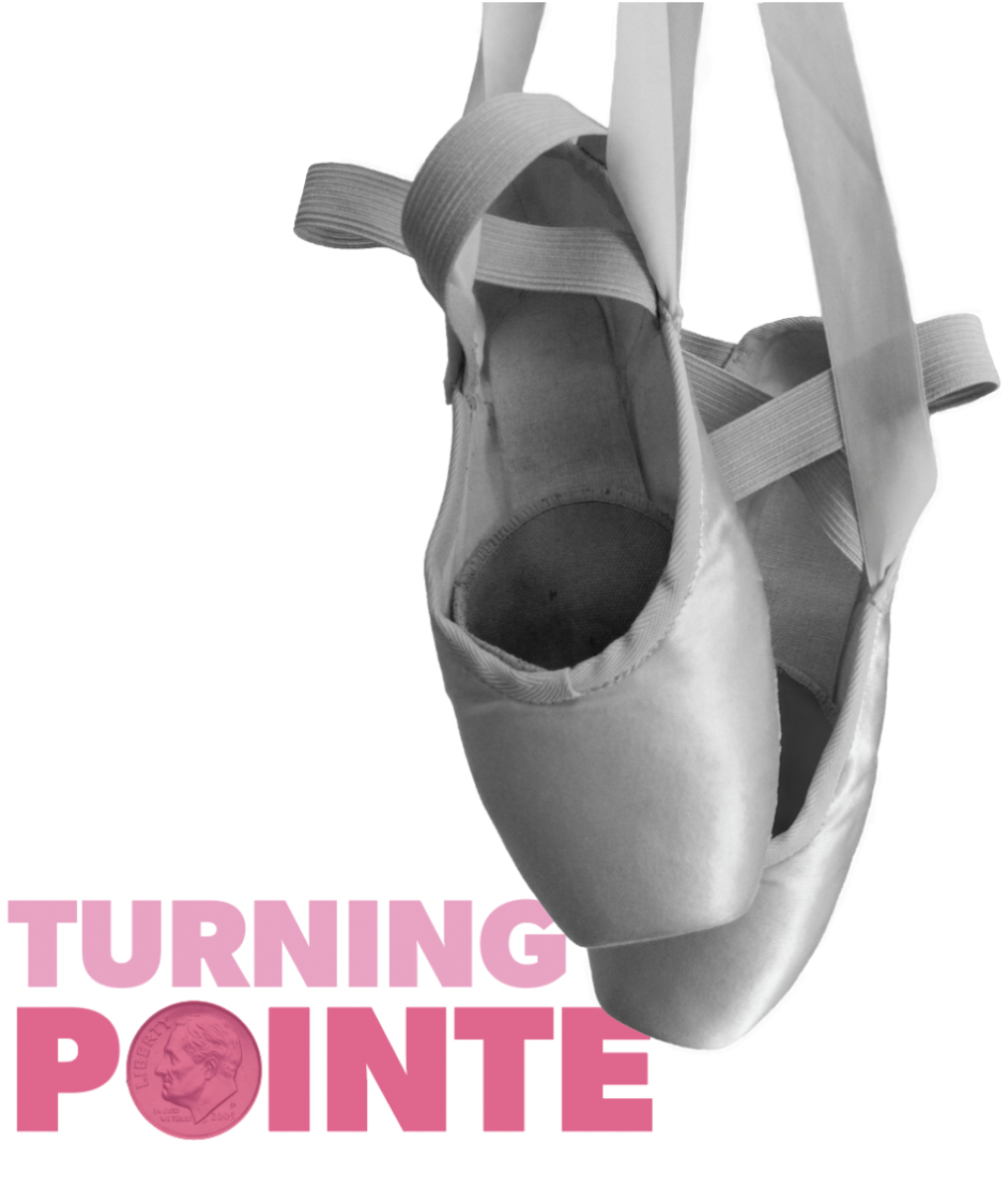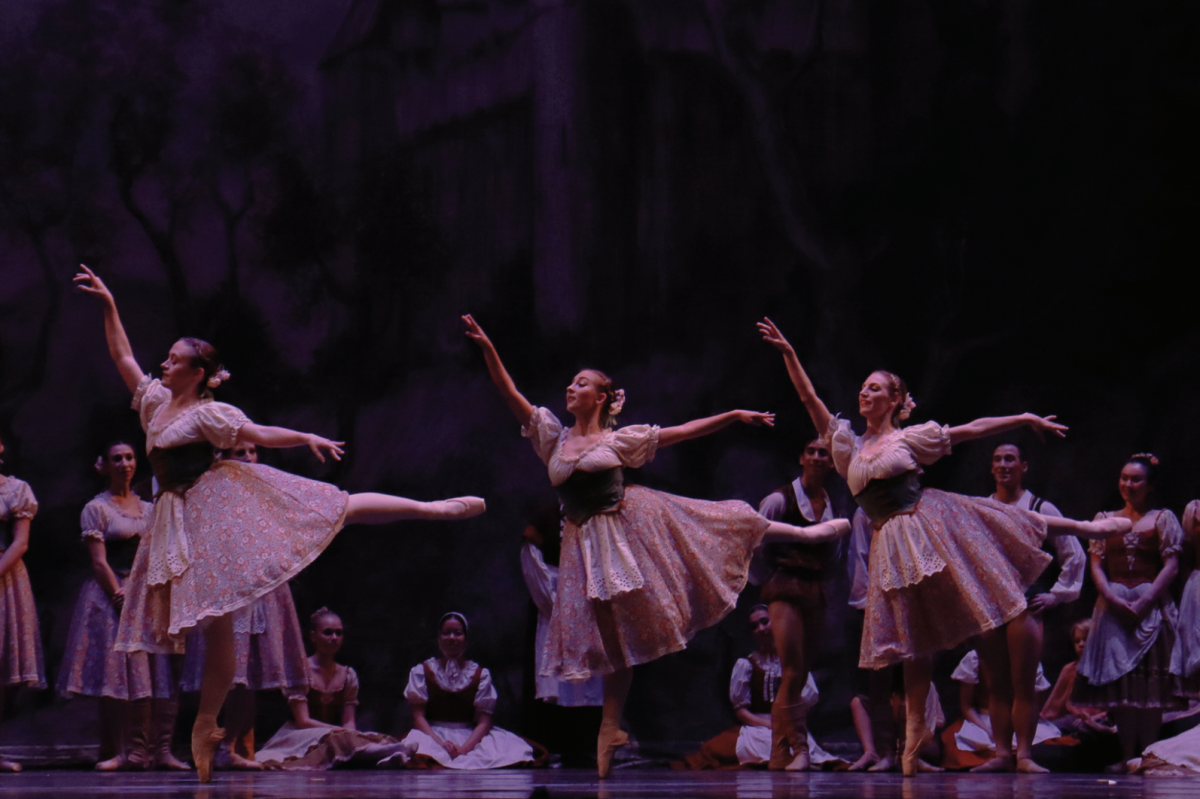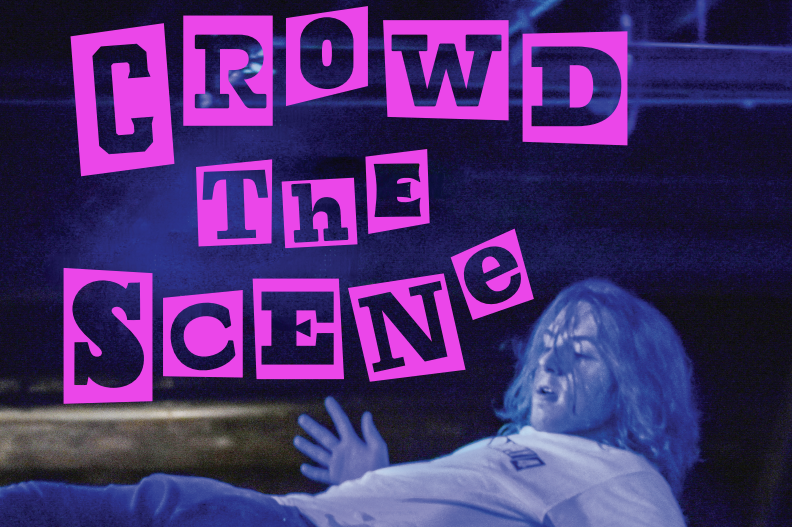The overture: an orchestral piece at the beginning of an extended composition, used frequently to start a show.
When I was a little girl sitting in a velvet-lined seat in a cool theater, the moment the overture began was always so intriguing. The lights dimmed and all around, I heard the stir of people. Soft chatter emerged as the audience prepared for the dancers to take the stage. Then the curtains lifted, the overture ended, the crowd fell silent, and the dancers began. Pointe shoes glided acr
oss the floor and costumes shined in the light. I was immediately transported into another world — a world where enticing music was playing and a magical story was about to unfold.
- • •
I was raised in a household where ballet was important, and I trained in ballet for a number of years. Growing up, I watched memorable shows, specifically from the Louisville Ballet, and my love for the art remains today.
Founded in 1952, the Louisville Ballet is the fifth oldest professional ballet company in the country. It was in the headlines last fall, but not in the most positive light.
In August, I was sitting in school, scrolling aimlessly through Instagram when a post from WDRB caught my eye. It read, “Louisville Ballet in need of $3 million.” I had to read that sentence over and over again. I was confused on how something I was so connected to could be in trouble without me knowing. In the days following, I saw similar posts saying the same thing.
Leslie Smart, CEO of the Louisville Ballet, set the record straight on all of the various headlines. She explained that the company had an annual contributed income goal to raise $3.1 million in 2023. This money will come from three places: individuals, foundations, and corporations.
“The ballet needs this money to sustain staff salaries, productions, and facility maintenance,” Smart said.
Smart also said that the company needs the money to pay off additional debts, such as the mortgage on their building and an Economic Injury Disaster Loan that they took out during COVID-19.
Smart also noted that this goal isn’t out of the ordinary for the ballet. The goal for 2022 was $2.5 million, but rose as a result of lower audience turnout, in part due to the cancellation of three sold-out performances of the Brown-Forman Nutcracker last year. Since the ballet’s main source of income is ticket sales, this resulted in a lack of money coming into the organization. This phenomenon isn’t unique to Louisville. Ballets nationwide have taken a hit over recent years. Smart explained that 27 percent of audience attendees haven’t returned to theaters since COVID-19, which was a main contributor to the Louisville Ballet’s lower audience turnout.
However, ballet as an art form has been struggling since before the pandemic. Financially, the Louisville Ballet has always had its ups and downs, but the Louisville Ballet School, a youth training program run by the Louisville Ballet, has not been impacted by financial hardships.
- • •
The interlude: A pause between changing music during a piece of composure.
I danced at the Louisville Ballet School for 11 years. I used to come home from school, rush to throw a snack in my bag, put on my leotard and tights, and slick my hair back into the tightest bun possible. Then I would go to the studio, trade in my sneakers for slippers, and go to class.
Similarly, Kirsten Sandford, 17, is a ballerina at the Louisville Ballet School and a junior at Floyd Central High School. Sandford has been training at the school for six years.
Before recitals, Sandford would listen for her cue backstage as audience members shuffled into their seats. Dressed head to toe in sparkles, pointe shoes tied, and stomach in knots, the overture began. The other dancers would start their pre-show rituals, including various chants to get everyone excited. Anxiously awaiting the curtain pull, Sandford felt on top of the world. She and her best friends were about to go onstage to perform a piece they’d been working on for months.
“The memories backstage are probably what I remember most,” Sandford said. “It’s like my family all around.”
Her dance teacher frequently said, “Right now you have two different jobs, two full time jobs right now: being a high school student and a ballet dancer.”
Sandford has made many sacrifices to pursue dance, including being homeschooled for a couple of years so she could stay at the ballet school. Before Sandford was homeschooled, ballet class started at the same time her school was let out, so she would have to miss a whole academic class at least once a week.
Sandford now dances six days a week and dedicates multiple hours each weeknight to practice. On Saturdays she dances from 9 a.m.-4:30 p.m. On top of that, she goes to school full time, finding breaks in her schedule to squeeze in homework, and makes time to hang out with her friends. Despite her full plate, she sticks with ballet.
“Ballet, it’s like my whole life,” Sandford said. “It’s not for everyone. It’s a very huge commitment.”
This level of commitment comes at a cost — not just time sacrifices like
Sandford has had to make, but the literal cost of tuition, ballet shoes, and costumes. However, the Louisville Ballet has programs that support dancers who might not be able to cover these costs, including various free workshops and camps in the summer that are put on in public spaces. The Louisville Ballet also runs a program called Ballet Bound, which grants students in need full or partial scholarships to the Louisville Ballet School. This program helps to cover the cost of tuition, uniforms, and any other fees.
“We have committed to these students from age seven up to seniors in high school to have a scholarship at our school,” Smart said.
When Sanford needs motivation to continue her dancing career, she always goes back to the community at the ballet. So being able to have programs that support kids of different socioeconomic backgrounds ensures that Sandford will continue to have peers to train alongside.
“I think the people at ballet are like my family,” Sandford said. “We all have each other’s back.”
Even though Sandford’s passion has persisted throughout her life, it is comm
on for young ballerinas to give up the art as a result of the expenses and time commitment, among other reasons. This, combined with the demanding schedule requirements, is why companies like the Louisville Ballet have been struggling. That’s not to say, “Join a ballet class tomorrow.” In fact, there are many ways to help support the ballet, with funding coming from a variety of sources.
“My approach has been to meet with donors,” Smart said.
Considering the amount the ballet is trying to raise, funding through donors is an efficient way to get larger sums of money. Recently, Smart has been asking for “major gifts,” which are donations of $10,000 and above. Back in August, Jack Harlow, a Louisville native and rapper, gave the ballet one of these major gifts, donating $50,000. Staff at the Louisville Ballet have
reached out to 3,000 past donors to request additional funding. Money from these efforts helps make sure that the ballet can function without having to make cutbacks.
Another way to support the ballet is through ticket purchases. With a decrease in seasonal ticket holders, the previously steady flow of money into the company has dwindled.
“People tend to make that decision at the last minute whether or not they’re going to go to the theater or not, and that’s impacting a number of arts organizations around the country,” Smart said.
This knowledge has led the company to focus on what their subscription options look like. They have begun to offer a “create your own” package so anyone can go on the website and select a few shows, rather than being obligated to hold season tickets to all of them. Not only does this make the subscriptions cheaper, it encourages people to attend more shows. The most
widely attended show at the ballet is The Brown-Forman Nutcracker.
“‘The Nutcracker’ is the performance that sustains us throughout the year,” Smart said.
The energy at shows like The Brown-Forman Nutcracker was magical to me as a kid in the audience. There were people of all ages there to enjoy the production and everyone was excited to see the company’s rendition of the nostalgic story.
Aside from the professional company putting on The Brown-Forman Nutcra
cker in the winter, the ballet school does a different production every spring. The 2024 production will be “Hansel and Gretel.” The spring show is always kid friendly, which sells more tickets and encourages even more people to come and support the arts.
To get involved, Smart suggested that Louisville youth start a teen board in support of the ballet. This board would include individuals who didn’t necessarily want to dance, but wanted to support the nonprofit through volunteerism, outreach, and fundraising efforts.
By creating a teen board, not only would youth get to see shows from behind the scenes, but they would get a chance to help a nonprofit in their community. If teens are interested in starting a board, Smart said the best way to do so would be by contacting the ballet through the website.
- • •
The fade-out: When the stage lights dim and the music drifts off into sile
nce.
When a show ended, the house lights would come up and infrequent whispers turned to incessant chatter. I was always left with a yearning for more — whether I was on stage or in the audience. This love is shared with other members of the arts community.
“I just think art enriches our lives in so many ways,” Smart said.
The ballet has had a strong place in the Louisville community for many years — whether that is through extending the accessibility of the arts or continuing to bring magic into the lives of so many like it has done for me. Reaching their annual income goal will allow the Louisville Ballet to continue enhancing the experience of not only the audience, but the community of dancers impacted by its programs. After all, community efforts and contributions will ensure that when the lights fade out at the end of a performance, they will continue to come back on. •
- Writing: Maya O’Dell
- Design: Noa Yussman
- Photos: Anna Burzynski

















